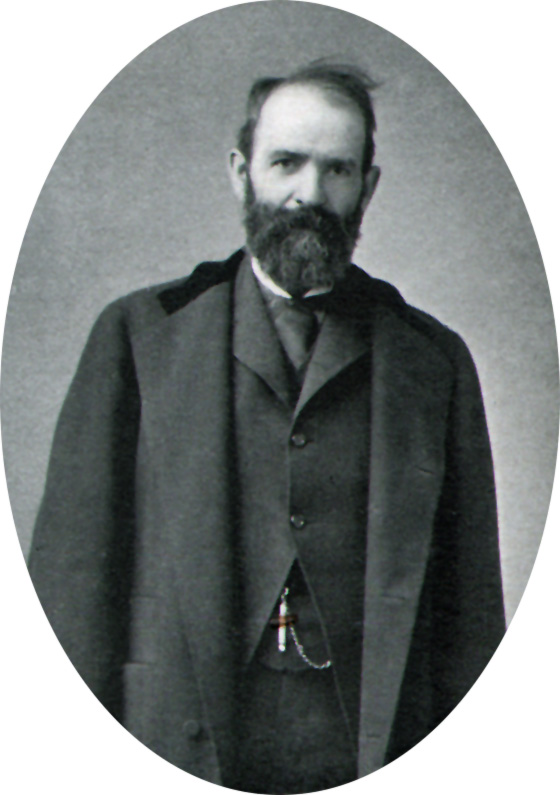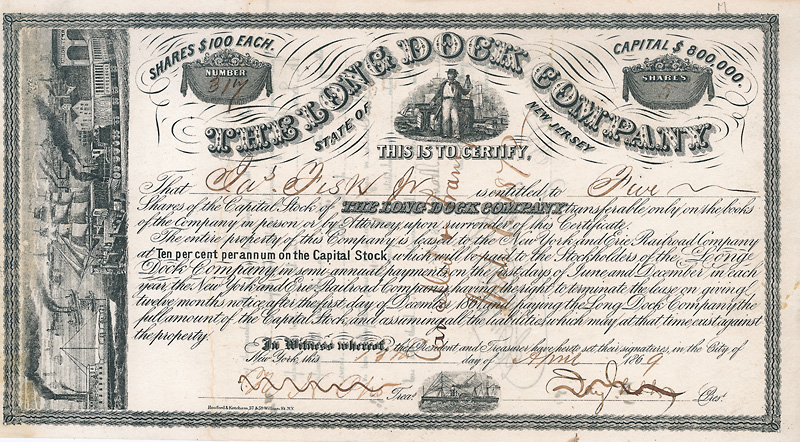|
Business Magnates, Industrialists, Railroad Tycoons, Capitalists, Financiers
|
|
Jay Gould
|
 |
|
Jay Gould, eigentlich Jason Gould, (1836-1892) war ein US-amerikanischer Anleger und Unternehmer. Gould war der Sohn eines Bauers aus Roxbury im Delaware County. Im Alter von 16 Jahren verließ er die Schule, widmete sich aber weiterhin der Mathematik und der Landesvermessung und übernahm die Buchhaltung für einen Schmied. Nachdem er mehrere andere Arbeiten angenommen hatte, stieg Gould ins Bankgeschäft ein. Über seinen Schwiegervater erhielt Gould einen Job bei der Rensselaer and Saratoga Railroad. In kurzer Zeit reorganisierte er das Unternehmen und kaufte es auf. Genauso machte er es mit Rutland & Washington Railway, aus dem er hohe Gewinne herausholte. Im Jahr 1859 ging Gould an die Börse und focht an der Seite von Daniel Drew und James Fisk im Krieg um die Kontrolle der Erie Railroad. Schließlich gewannen Gould und Fisk die Macht über das Bahnunternehmen und begannen, es regelrecht auszuplündern. Sie fälschten und manipulierten den Aktienwert und mussten im März 1872 die Unternehmensführung abgeben. Während dieser Zeit verbündeten sich Gould und Fisk mit dem Tycoon "Boss" William Tweed, den sie zum Direktor der Erie Railroad machten. Tweed für seinen Teil revanchierte sich, indem er den beiden Deckung vor der Justiz zusicherte. Außerdem stand Gould in enger Verbindung zum Schwager des US-Präsidenten Ulysses S. Grant. Der Schwarze Freitag von 1869 machte Goulds Spekulationen vorübergehend ein Ende, als er im Begriff war in den Goldmarkt groß einzusteigen. Nachdem er die Erie Railroad verlassen musste, ging er zum Unternehmen Union Pacific Railroad, von dem er sich 1883 zurückzog – mit reichlich Gewinn. Am Zenit seiner Macht kontrollierte Jay Gould 16.000 km Gleisstrecke, ein Neuntel der gesamten in den USA gelegten Bahngleise. Er hinterließ seiner Familie ein Vermögen von schätzungsweise 72 Millionen Dollar. Gould gilt als der rücksichtsloseste der sogenannten Robber Barons. |
| Jason "Jay" Gould (1836-1892) was an American financier who became a leading American railroad developer and speculator. He has long been vilified as an archetypal robber baron, whose successes made him the ninth richest American in history. Some modern historians working from primary sources have discounted various myths about him.
Jason Gould was born in Roxbury, New York, the son of John Burr Gould (1792–1866) and Mary More Gould (1798–1841). Gould's father was of British colonial ancestry, and his mother of Scottish ancestry. Gould's grandfather, Alexander T. More was a businessman, and his great-grandfather John More was a Scottish immigrant that founded the town of Moresville. Jay Gould studied at the Hobart Academy, but left at age 16 to work for his father in the hardware business. He continued to devote himself to private study, emphasizing surveying and mathematics. In 1856 he published History of Delaware County, and Border Wars of New York which he had spent several years writing. Gould later went to work in the lumber and tanning business in western New York (founding Gouldsboro in a joint-venture with Zadock Pratt) and then became involved with banking in Stroudsburg, Pennsylvania. It was during the same period that Gould and James Fisk became involved with Tammany Hall. They made Boss Tweed a director of the Erie Railroad, and Tweed, in return, arranged favorable legislation for them. Tweed and Gould became the subjects of political cartoons by Thomas Nast in 1869. In October 1871, when Tweed was held on $1 million bail, Gould was the chief bondsman. In August 1869, Gould and Fisk began to buy gold in an attempt to corner the market, hoping that the increase in the price of gold would increase the price of wheat such that western farmers would sell, causing a great amount of shipping of bread stuffs eastward, increasing freight business for the Erie railroad. During this time, Gould used contacts with President Ulysses S. Grant's brother-in-law, Abel Corbin, to try to influence the president and his Secretary General Horace Porter. These speculations in gold culminated in the panic of Black Friday, on September 24, 1869, when the premium over face value on a gold Double Eagle fell from 62% to 35%. Gould made a nominal profit from this operation, but lost it in the subsequent lawsuits. The gold corner established Gould's reputation in the press as an all-powerful figure who could drive the market up and down at will. For the rest of his life, newspaper writers would attribute to Gould almost any market development they could not explain otherwise. In 1873 Gould attempted to take control of the Erie Railroad by getting foreign investments from Lord Gordon-Gordon, a cousin of the Campbells looking to buy land for immigrants, Gould bribed Gordon-Gordon with $1 million in stock. However, Gordon-Gordon turned out to be a fraud, cashing the stock immediately. Gould sued Gordon-Gordon, with Gordon-Gordon put on trial in March 1873. Gordon-Gordon gave the names of his European personages in court, whom he claimed to represent, and was granted bail while the references were checked. Gordon-Gordon took this opportunity to flee to Canada, where he convinced authorities that the allegations brought against him were false. After failing to convince or force Canadian authorities to hand over Gordon-Gordon, Gould and his associates, which included two future Governors of Minnesota and three future Members of Congress, attempted to kidnap him. The group was successful, but were stopped and arrested by the North-West Mounted Police before they could return to the United States. The kidnappers were put in prison and refused bail. This led to an international incident between the United States and Canada. Upon learning that the kidnappers were not given bail, Governor Horace Austin of Minnesota demanded their return and put the local militia on a state of full readiness. Thousands of Minnesotans volunteered for a full military invasion of Canada. However, after negotiations, the Canadian authorities released the kidnappers on bail. The incident resulted in Gould losing any possibility of taking control of Erie Railroad. After being forced out of the Erie Railroad, Gould started, in 1879, to build up a system of railroads in the Midwest by gaining control of four western railroads, including the Union Pacific and the Missouri Pacific Railroad. In 1880, he was in control of 10,000 miles (16,000 km) of railway, about one-ninth of the length of rail in the United States at that time, and, by 1882, he had controlling interest in 15% of the country's tracks. Gould withdrew from management of the Union Pacific in 1883 amidst political controversy over its debts to the federal government, realizing a large profit for himself. Gould also obtained a controlling interest in the Western Union telegraph company, and, after 1881, in the elevated railways in New York City. Ultimately, he was connected with many of the largest railway financial operations in the United States from 1868-1888. During the Great Southwest Railroad Strike of 1886 he hired strikebreakers; according to labor unionists, he said at the time, "I can hire one-half of the working class to kill the other half." Gould died of tuberculosis on December 2, 1892, and was interred in the Woodlawn Cemetery in The Bronx, New York. His fortune was conservatively estimated to be $72 million for tax purposes. Although a donor to charity from the 1870s onward, he willed all of his fortune to his family. At the time of his death, Gould was a benefactor in the reconstruction of the Reformed Church of Roxbury, now the Jay Gould Memorial Reformed Church. |
 |
|
Stock certificate of the Long Dock Company, issued 1869 to James Fisk Jr., hand signed by Jay Gould as president
|